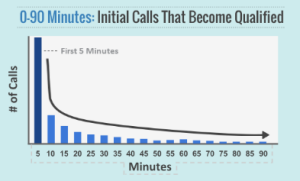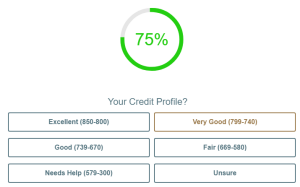What exactly is speed to lead? Speed to lead refers to the amount of time it takes from the moment a potential customer fills out a lead form until they are first contacted. In the digital era where online consumers have endless options and little patience, every second matters when it comes to how fast you respond to leads. You may have built a beautiful website with all the bells and whistles, but the speed at which you respond to the leads you generate may have the biggest impact on your success. Let’s take a deeper look into just how important speed to lead really is.
If You’re Not First, You’re Last
Odds are a prospect that has filled out a lead capture on your site has done the same on a few other sites as well. You are most likely offering comparable products and your potential client has similar interest in both options. This is where speed to lead becomes crucial.
According to a study done by LeadConnect Marketing, 78% of customers will do business with the first person that responds to their inquiry. You can see just how important speed to lead is from this statistic alone. Anyone who reaches out to your business is already interested in what you have to offer. By reaching out quickly, you are building confidence with your potential client by showing them that their time and interest is of the highest importance to you. From there, if you can meet their needs, there is little reason for that person to repeat the process with another sales rep.
If you’re not the first person to respond to a potential client, you have all but lost that client already. A competitor that places top priority on speed to lead, and who reaches out immediately, is most likely going to close that sale.
So Just How Fast Do You Need to Be?
Ideally, the best time to respond to a lead is the moment that lead reaches you. A potential client may submit a lead, and within 10 minutes, they may be unreachable. Perhaps they filled out your lead capture while on a break and had to return to work before you could contact them. Your window of opportunity quickly closed and within that few short minutes, you may have lost that client for good. Of course, it may not be practical to drop what you are doing and contact a lead within seconds. Let’s see what the odds of success look like the longer it takes to contact a prospect.
LeadConnect’s study shows that there is a 391 percent increase in conversions if a lead is contacted within the first minute after their submission. However, if you wait longer than 5 minutes to respond to a lead, odds of qualifying that lead drop by 80 percent! The difference that just a few minutes makes when responding to a lead is shockingly drastic. Another study conducted by Insidesales.com shows that the odds of qualifying a lead when you call after 30 minutes is 21 times less likely than if you were to call after 5 mins. When it comes to speed to lead, it is clear that every second counts.
Increasing Your Speed to Lead and Ultimately Your Conversions
Now that you understand the importance of speed to lead, what can you do to improve upon yours? Here are a few simple things you can do to decrease your speed to lead and increase your conversions.
Improve Your Lead Capture
The most effective use of your sales rep’s time is selling. If they are spending additional time doing research and gathering more information about a lead or prospect, speed to lead will be negatively impacted.
Designing quality lead capture forms that gather the information your sales reps need to qualify and contact leads will significantly improve your speed to lead. Consider giving leads a score so that if you get backed up, you can contact leads you believe will have the highest chance of closing.
Automation
Automating simple tasks like the assignment of new leads can be one of the biggest improvements you make if you don’t have these systems in place. If you do not, consider making the investment in software that will allow you to do so.
Use automating software to assign leads to your sales reps. Ensure that they are being sent to their phone’s, email, and any chat programs your company may use. Make sure you have automated email responses when a lead is submitted. This will get the contact process started and buy you a few moments to directly reach out to your prospect. Use this opportunity to let them know what your typical response time will be so that they can be prepared and not distracted when you call.
Organization and Preparation
It can be easy to simply assign leads to sales reps in a particular order. However, it is not uncommon for a sales rep to become bogged down while others are searching for something to do. Have systems in place to assign leads to your reps that can reach out to them the fastest. A round-robin distribution may work for you most of the time but be prepared for when you need to reassign leads so that they are contacted in the appropriate time frame.
Have a plan in place for when a lead can’t be reached. Even if you reach out to a lead instantly, they may not be available to speak over the phone at that moment. Set specific protocols for when follow-ups should take place and what type of secondary communication should be sent.
Do not underestimate the importance of speed to lead. If you know your speed to lead needs improvement, start making changes today. Invest your time and resources into software upgrades, training, developing new procedures, and any other areas that can decrease your speed to lead. The results will be worth the effort.










